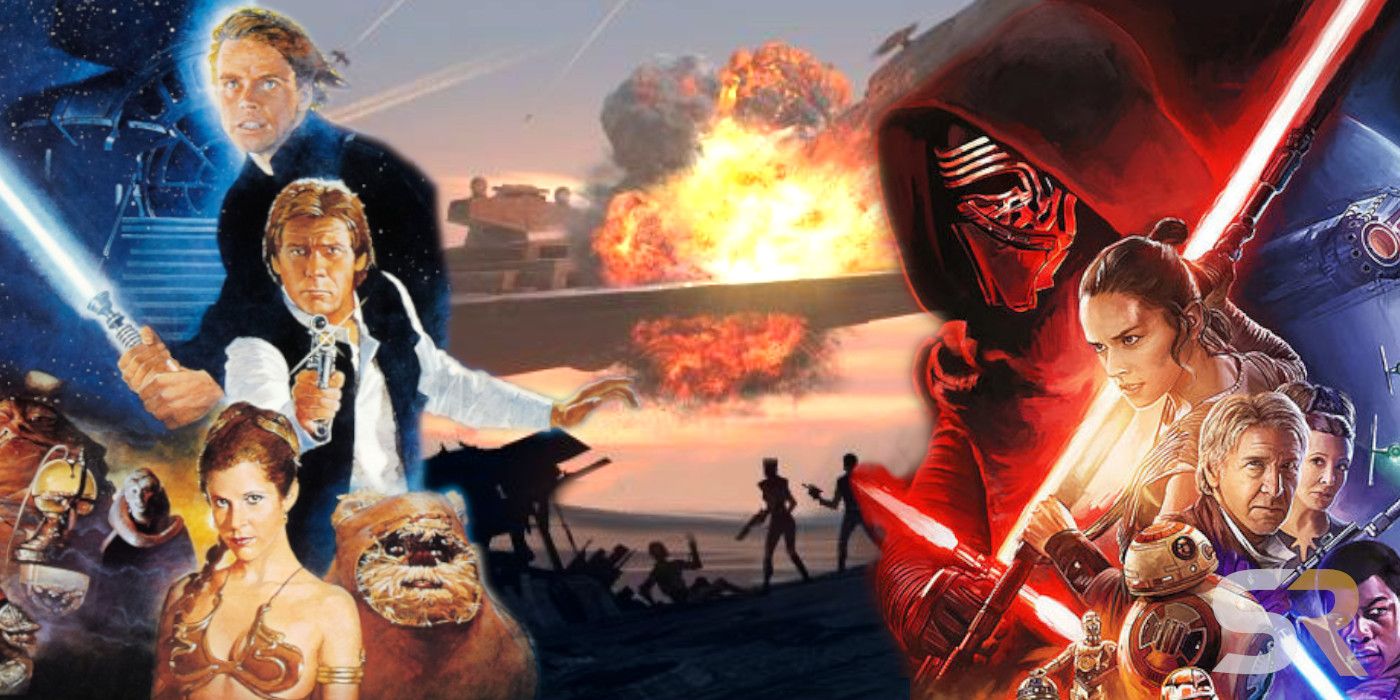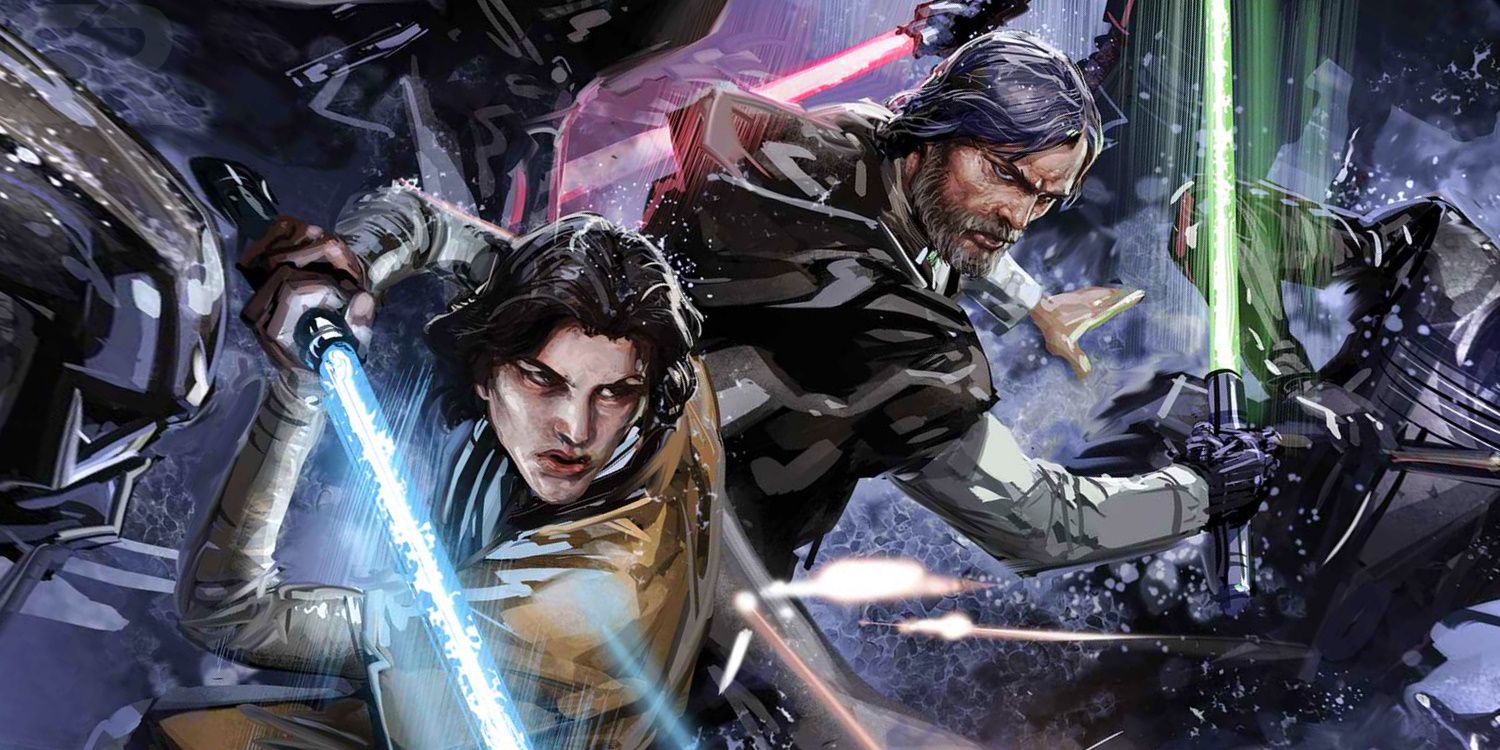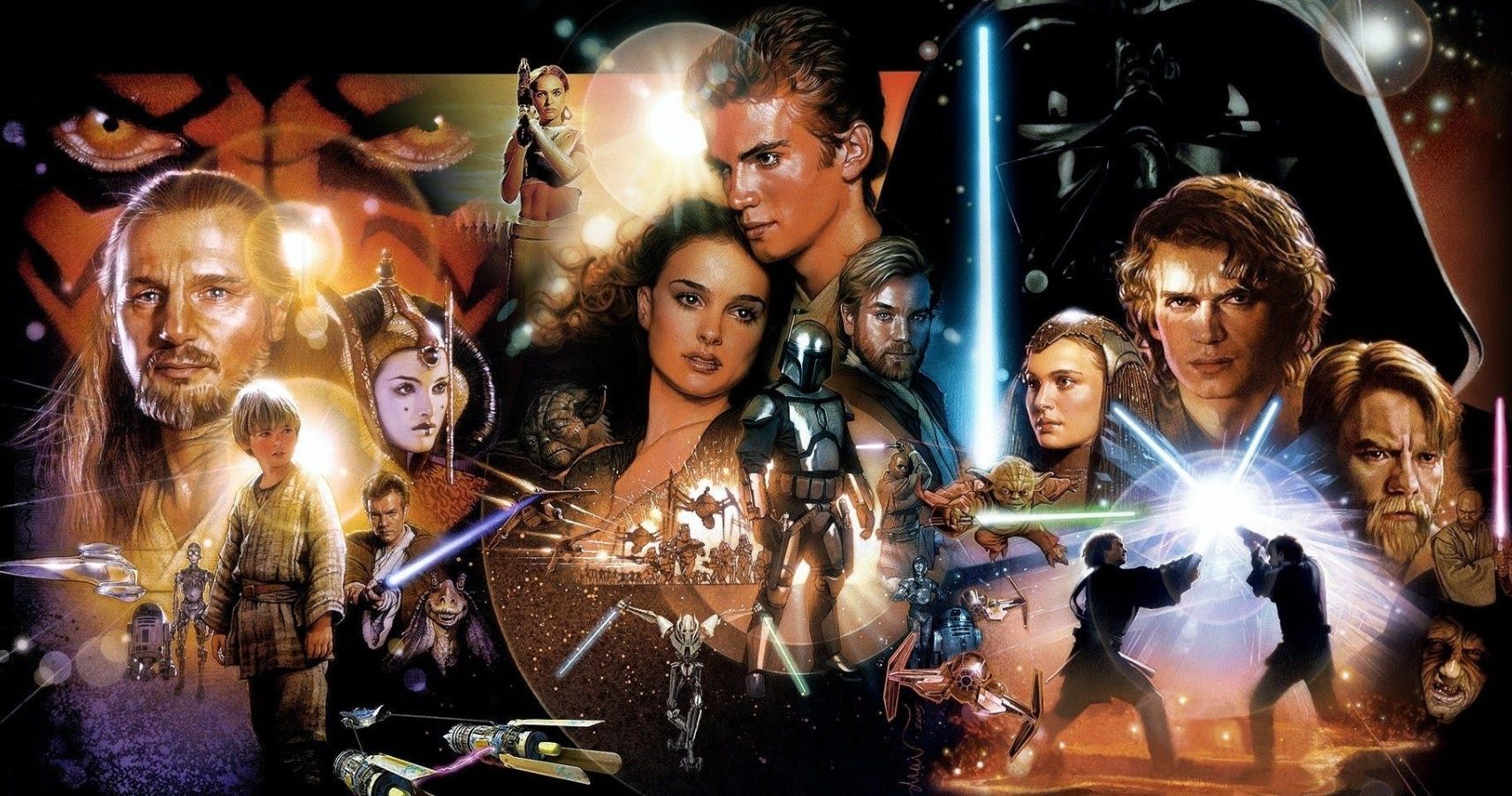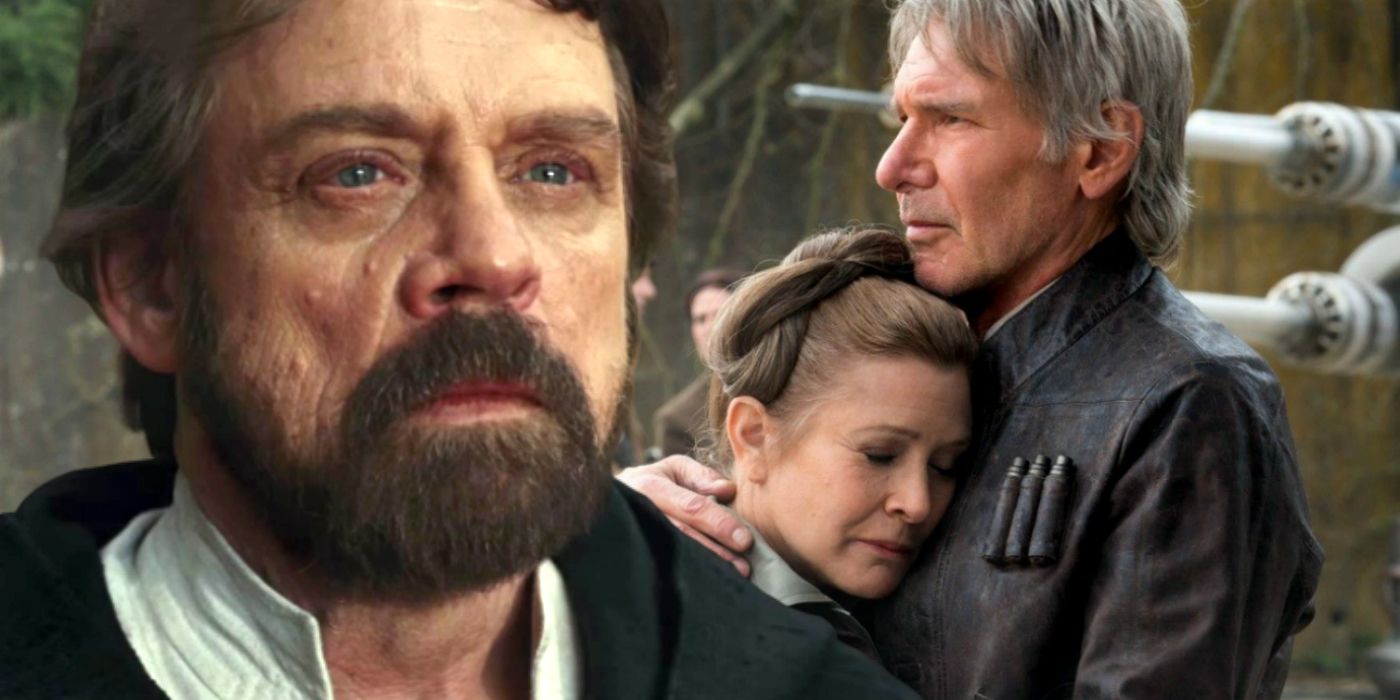Disney’s Star Wars sequels proved enormously divisive, and many of the problems are due to when Lucasfilm chose to place Star Wars: The Force Awakens in the Star Wars timeline. Picking up 30 years after Star Wars: Return of the Jedi, The Force Awakens sidestepped much of the interesting political fallout from the climactic Battle of Endor., and instead, JJ Abrams and Lawrence Kasdan formulated a universe that seemingly reset itself to the Rebels/Empire dynamic of Star Wars: A New Hope.
Major developments in the Star Wars timeline, like the formation of the New Republic, the emergence of the First Order, and the rise and fall of a new Jedi Order, were only name-dropped in the sequel trilogy, when those stories were arguably better suited for the Skywalker Saga's conclusion. Star Wars: The Force Awakens resorted to emulating the story and feel of the original trilogy, and consequently offered little narrative dimension to the Star Wars universe. Star Wars: The Last Jedi and Star Wars: The Rise of Skywalker likewise refused to give much focus to the preceding three-decade gap.
Star Wars: Why Rey Couldn't Sense The Jedi Before Rise of Skywalker
While the future of the Star Wars universe was already exhaustively explored in the Expanded Universe, Disney rendered these “Legends” as defunct upon their acquisition of Lucasfilm. Afterward, fans naturally expected the company to build its own post-Return of the Jedi canon in the sequel trilogy. While these stories are present in other Star Wars material, their explanations are often met with more frustration than appreciation because it would have been great to see in a movie.
The Movies Only Teased the Stories Everyone Actually Cared About
Luke's success in redeeming Anakin Skywalker and the (apparent) death of Emperor Palpatine was seen as a satisfying saga conclusion for several decades, but with the arrival of the sequel trilogy, but there were still plenty of questions about what happened to Han, Luke, Leia, and the Rebel Alliance. What about all those doors left open for future stories? Will Luke train Leia? Will Han and Leia have kids? What about the remnants of the Empire? Instead of answering these questions explicitly, Star Wars: The Force Awakens jumped 30 years into the future and decimated the (unexplained) New Republic, reverting the galaxy to the Rebels vs Empire dynamic with the First Order and Resistance.
While never canon in George Lucas’ head, the Thrawn novels by Timothy Zahn was thought out and detailed, and a popular version of the immediate post-Return of the Jedi universe, as it incorporated all of the things left open after the Battle of Endor. Fans welcomed the gradual build-up of a fragile New Republic headed by Princess Leia, and the trials and triumphs of Luke’s further adventures as a Jedi - all things that were only hinted at in Disney’s version.
From the audience’s point of view, the creation of the New Republic, the Empire’s return and opposition, the training/fall of Luke’s apprentice etc, were all the most interesting aspects of the new story, and Disney’s trilogy hinged on the fallout of those stories, but didn't actually explain the events in full. Sure, the various novels and comic books reveal this part of the Star Wars timeline, but these were stories people wanted on the big screen. By condemning most of the post-Return of the Jedi story to the expanded universe, movie audiences missed out on many important stories to understanding what was even happening in the sequel trilogy.
Star Wars Confirms C-3PO Remembers The Whole Skywalker Saga Now
The Sequels Could Have Followed a Similar Structure to the Prequels and Still Told a Similar Story
When it comes to structure, Disney perhaps missed an opportunity to cover a broader timeline like the prequels did with a major time jump after Star Wars: The Phantom Menace. Although only a few years elapse between each original trilogy installment, Star Wars: The Phanom Menace and Star Wars: Attack of the Clones are separated by a decade, and there is nothing to say that this approach couldn't be taken for the sequels. While the Star Wars prequels are hit and miss with most audiences, an elongated timespan can always prove beneficial.
The Battle of Jakku was teased in Star Wars: The Force Awakens with beaten Star Destroyers and AT-ATs scattered across the desert. According to the lore, it took place a year after the Battle of Endor and was the Empire’s last major effort to regain control of the Galaxy. Being such a grand, desperate and ultimately failed attempt, the Battle of Jakku would have been a phenomenal third act for Episode VII, helping fans understand the rise of the New Republic and the seeds of the First Order. It also would have avoided the much-criticized repeats of Star Wars: A New Hope with the battle of Starkiller Base being the third time a Star Wars movie ended with a planet-sized superweapon being destroyed by X-Wings.
A time jump could have shown the training and fall of Ben Solo in Episode VIII. Luke and Ben’s relationship was one of the most missed arcs in the sequel trilogy and so needed some sufficient development and devoted screen time. The Aftermath book trilogy, which covers the Battle of Jakku, actually sowed the seeds of Palpatine's resurrection, which would have been a much better looming threat as audiences wondered if he was actually alive or if it was just political propaganda to keep the Empire together before the eventual reveal in Episode IX, just like Disney's trilogy, only this time it actually makes sense.
The Story Had to Accommodate Older Original Trilogy Actors
The most complicated part of the sequel trilogy was the prospect of bringing back the original trilogy characters. Mark Hamill, Harrison Ford, and Carrie Fisher had aged over 30 years since Star Wars: Return of the Jedi, making it hard to continue their arcs in the years immediately following the Battle of Endor.
Star Wars Retcons The Sith Rule Of Two
This means in order to include the original trilogy characters in any capacity, they would either need to be recast or de-aged. While Tarkin and Leia in Rogue One: A Star Wars story fell partially into the "uncanny valley," Marvel has seen much more success with de-aging in many of their films, including de-aging Samuel L. Jackson for the majority of Captain Marvel. It's possible that route could have worked if the legacy characters had smaller parts in Episode VII, but a time jump of 15-20 years for Episode VIII would have been much more manageable, at which point the actors could likely play their younger selves without significant de-aging work.
The necessarily minimized role of the legacy characters in Episode VII would also pave way for a much more logical introduction to new sequel trilogy characters, allowing for a true passing of the torch instead of having to split the new character introductions with satisfying conclusions for original trilogy favorites.
Unfortunately, Carrie Fisher's tragic passing would still be a major wrench in this plan, but there was never any way for Disney and Lucasfilm to plan for that. This alternate plan would certainly be full of its own hurdles, but there was never an easy way to bring Star Wars back to the big screen. At least filling these major gaps in the timeline would have prevented some of the major plot holes that developed due to the 30-year gap and larger sequel trilogy plan.
Regardless of whether or not Star Wars: The Rise of Skywalker was a satisfying conclusion to the Skywalker Saga, future movies are now hopefully free of the burden of satisfying an arc started by George Lucas over 40 years ago, enabling future Star Wars filmmakers like Taika Waititi to delve into new eras and tell new adventures with new characters in a galaxy far, far away.
JJ Abrams’ Bad Robot Made Star Wars Canon By Rise of Skywalker




